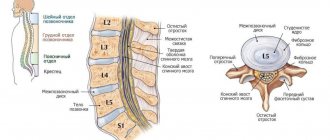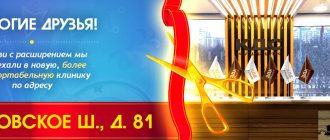To begin with, let's divide all seizures into generalized, when the whole body is subject to a convulsive attack, and local, when only one area is affected - for example, the calf muscle.
There are also tonic and clonic seizures. The first ones are more like not a cramp, but a spasm, in which the body seems to be frozen in one position. A classic example of a tonic seizure is opisthotonus in tetanus. Such seizures are rare and are always caused by a serious illness: tetanus, neuroinfection, brain tumors.
The second option is clonic convulsions, in which the body makes frequent chaotic movements, that is, it beats in a typical convulsive seizure, as most of us imagine it.
This option can be encountered much more often in life - these include febrile convulsions when the temperature rises in young children, and epileptic seizures in people of any age. If your leg is cramped or your biceps is constantly twitching, this is unpleasant, but not dangerous.
If we are talking about generalized seizures, a person needs quick medical attention. Although neurologists like to repeat that a seizure is not as terrible as it looks from the outside.
Febrile seizures
This is a fairly common occurrence when it comes to children under 6 years of age. It is believed that every tenth child responds to a rise in temperature at least once in his life with a generalized convulsive seizure.
Typically the temperature is required to rise above 38.5 degrees. Then, in the still imperfect child’s brain, foci of pathological excitation arise, triggering many false signals to the muscles.
It looks scary, but in reality everything is not so dangerous: usually the seizure goes away within 2-3 minutes, but it can last 15, after which it ends as suddenly as it began.
And what is important - without causing any harm to the baby. Only seizures lasting more than half an hour require hospitalization and observation. You should also call a doctor if a child over 6 years of age, a teenager, or an adult develops seizures in response to a fever.
What to do? The only way you can and should help a child is to be close to him and make sure he doesn’t get hurt. Just in case, be prepared to turn your head to the side if vomiting begins. Forget about sticking spoons in your mouth.
In attempts to unclench your teeth and pull your tongue out of your mouth, you will only injure yourself and the child. Epilepsy subsequently develops in only 3% of children who have had febrile seizures, but it is still worth doing an electroencephalogram after recovery.
Local tonic convulsions
Muscle spasm in response to excessive physical activity or prolonged uncomfortable position is a common phenomenon. Professional athletes know this more than others, but even for ordinary fitness enthusiasts, sudden muscle pain causes many unpleasant emotions.
A cramped muscle is tense and hard to the touch, and the spasm is accompanied by severe pain. In addition to the calf muscles, convulsive spasms affect the muscles of the neck, and sometimes the muscles of the thigh and forearm can be affected. Usually, local tonic convulsions go away on their own within 5-10 minutes, but it’s still better not to endure the pain.
There is a simple scheme of actions that will help return the muscle to its normal state.
What to do? The most basic cause of spasm is a lack of microelements (primarily magnesium), excessive stress on an insufficiently warmed muscle, or prolonged stay in an uncomfortable position (this is what causes muscle spasms during sleep).
Therefore, people involved in physical exercise are recommended to take additional vitamin and mineral complexes, eat dried apricots before training, avoid dehydration, and most importantly, devote enough time and effort to warming up to “warm up” the muscles.
If a spasm does occur, there are techniques for local impact on the muscle. For example, if you have a spasm in the calf muscles, you need to stretch your leg forward as much as possible and strongly pull your foot towards you.
I want to get rid of these symptoms as quickly as possible. As a rule, muscle pain appears as a result of physical activity. But is this always the case? When is pain just a harmless physiological phenomenon, and when is it a sign of illness?
Muscle spasms
Muscle spasms are the most common cause of muscle pain. Muscle spasms can develop for various reasons. It develops acutely or over a long period of time with chronic overexertion. In this case, the pain can be dull, aching or, on the contrary, stabbing. It can last a few seconds or be protracted.
The most common reasons that lead to persistent muscle spasms:
- Prolonged muscle strain due to an uncomfortable position in which a person works. This is precisely the nature of back and neck pain among many office workers, leg pain among teachers and salespeople, hairdressers, and surgeons.
- Injuries as a response when muscles are forced to overstrain.
- Incorrect posture - as a result of this, certain muscle groups are constantly under heavy load and they are overstrained.
- Carrying a bag on one shoulder, and other asymmetrical physical activity.
- Hypothermia (fans, air conditioners and other cold air flows).
To get rid of the above unpleasant sensations, you first need to eliminate the causative factor. The next step should be rest, excluding additional physical activity and the use of warming ointments. In some cases, massage will be helpful. However, it should be said that sometimes it is easier to warn and be prepared for physical activity; for this you need to first perform warm-up exercises, or use ointment, elastic bandages, belts, bandages.
Lack of substances
Unpleasant sensations in the muscles can be caused by reasons that a person is not even aware of. Who would think that his arms and legs hurt because there is a lack of potassium or calcium salts in his body?
However, this is a very common reason. The most unpleasant thing is that a lack of potassium can cause discomfort in the heart, because the heart is the same muscle. A person goes to doctors, undergoes electrocardiographic and other examinations. And he does not agree that the doctor prescribed him (in his opinion) a frivolous treatment - “vitamins”. Distrust of the doctor and refusal to take the prescribed drug will exclude the opportunity to obtain the necessary complex of minerals, establish electrolyte balance, and will not contribute to healing.
Calcium deficiency develops for various reasons. Very often during periods of rapid growth of the body, during pregnancy during periods of hormonal changes in the body and especially in older people. Osteoporosis is a more catastrophic and later consequence of calcium deficiency. The harbingers are a banal aching, periodic muscle pain.
Mineral deficiency can be directly related to both lack of dietary intake, as well as as a result of forced metabolism (breakdown) in athletes and those who like to push themselves in a fitness club, irregular intense physical labor, adherence to various kinds of diets (refusal to eat), with the goal is to lose weight.
This explains the way to get rid of the problem. Seek advice from a doctor and, if necessary, undergo the necessary examination to confirm or refute the suspected deficiency of substances. Thus, uncontrolled use of drugs can lead to an increased content of minerals, and sometimes this is worse than their deficiency (especially for potassium) and most often it is enough to limit yourself to eating foods rich in certain substances without resorting to taking medications.
Myositis
Painful sensations in the muscles that increase with movement can be caused by myositis. Myositis is inflammation of muscle tissue. At the same time, the pain is aching, occurring in the arms, legs, and muscles of the torso. Sometimes when palpating the muscle, you can feel nodules or cords. Myositis occurs for various reasons. It appears as a result of injuries, muscle strain, as a complication after viral diseases, or a cold. Some parasites, such as Trichinella, also cause myositis. At the same time, fever may develop with parasitic myositis.
The nature of myositis should be clarified by a doctor. And only after that start treatment.
Fibromyalgia
(a condition of the body caused by constant and sometimes debilitating muscle pain).
Such pains are common - some doctors even claim that 75% of people have experienced them in one way or another. Most often, fibromyalgia affects the muscles of the shoulders, chest, neck, back of the head, lower back, and hips. And also often these aching pains cause restlessness at night and insomnia. The main difference between fibromyalgia is that the pain is distributed throughout the muscles and is associated with the act of movement, inhalation and exhalation. By pressing in areas of discomfort, you can even find the most painful points. The pain is diffuse - that is, it can appear and disappear in one place and flow to other areas of the muscles. A special place is occupied by the so-called “intercostal” fibromyolgia (neuralgia), which imitates pain in the chest and requires differentiation and cordiolgia (heart pain), which may hide a serious pathology.
Fibromyalgia can be caused by nervous and physical stress, frequent stress, injury, lack of sleep, emotional stress, exposure to cold or dampness, rheumatic and autoimmune diseases. It is interesting that most often nervous and suspicious young women and teenage girls suffer from fibromyalgia. It's enough to be nervous before exams. But in men, fibromyalgia more often occurs due to nervous or physical stress. Hard workouts or pressure at work are the main reasons for men.
Treatment of fibromyalgia on one side can be limited to taking valerian. On the other hand, it may require a more serious approach to treatment using rubbing ointments and tablet and injection forms of non-steroidal anti-inflammatory drugs, and correction of physical activity.
Colds, flu and other infectious diseases
Many infectious diseases (one could say almost all!) are accompanied by the appearance of muscle pain. This is explained by the fact that pathogenic microorganisms and viruses, during their vital activity in our body, cause its poisoning - intoxication of the body. And with intoxication, muscle pain of varying intensity occurs. The more severe the cold, the more your body muscles may ache.
It is usually difficult to confuse muscle pain caused by infections, viruses, and others. After all, the symptoms of the disease itself are obvious: fever, chills, weakness.
And the main treatment is treatment of the disease itself: lowering body temperature, taking antiviral drugs, immunomodulators, vitamins, anti-inflammatory drugs, drinking plenty of fluids and other therapeutic measures that help remove toxic substances from the body that cause intoxication. However, the appearance of pain in simple forms of a cold can manifest itself as other concomitant diseases and complications. For example, pain in the chest area may indicate the onset of complications - bronchitis, pleurisy, pneumonia and other serious illnesses.
Pain after exercise
The most common muscle pain. It appears after physical activity. Its nature is as follows: during work, the muscle produces lactic acid, which is a product of the metabolic metabolism of the working muscle. The more intense the workout, the more lactic acid is produced. It irritates the nerve endings in the muscles and causes a burning sensation. This process is determined by physiology and is necessary for the body: acid accelerates muscle regeneration and restoration and destroys free radicals.
Lactic acid is gradually removed from the muscle through the bloodstream. To speed up this process, it is necessary to resort to adequate rehydration (flooding).
In untrained people and under unusual or very heavy loads, muscle pain after exercise is caused not only by lactic acid, but also by microscopic injuries to the muscle fibers. Small wounds appear in the muscles, which causes pain hours and days after exercise. In principle, this is also not a pathology for the body: the released hormones activate the healing processes and functioning of the body, accelerate the metabolism of proteins and ultimately lead to the regeneration of muscle tissue. This is what athletes want to achieve through training. Negative consequences occur when there are too many microtraumas. Then the muscles are depleted rather than growing, since the regenerative possibilities are also not endless.
Calf muscle cramps
Many people have experienced leg cramps at least once in their lives. Often the muscles of the feet, fingers, and calves cramp. From a physiological point of view, cramps are sudden contractions and spasms of muscles caused by poor circulation or physical stress. A common cause of cramps can be poor movement or monotonous, repetitive movements. Such cramps develop in people who work a lot on the computer or play with a computer mouse, work on their legs, or train intensively.
Night cramps can be caused by problems with blood circulation and lack of calcium.
Frequent seizures can be caused by metabolic disorders and various endocrine disorders.
If seizures recur frequently, you should consult a doctor and find out the cause of their occurrence. If the culprit is just muscle overstrain and salt deficiency, then it’s enough to simply normalize your diet and stop putting too much strain on your muscles.
Pain and cramps are always an indicator that the body does not like something. Most often, eliminating their causes does not present any difficulties. Enough rest and good nutrition.
Be healthy!
Assistant at the Department of Anesthesiology, Intensive Care and Emergency Medical Care, Leningrad State Medical University named after. St. Luke" Sergey Oberemok
Local clonic seizures
The reasons for periodic twitching of a particular muscle may be the most unexpected. For example, strong emotional experiences, stress, due to which excitation in our body begins to prevail over inhibition, various neuroses arise.
Or heredity, due to which we inherited easily excitable muscles. If your grandmother or mother often complained of local convulsions, this is from them. An unhealthy diet lacking essential micronutrients (crash diet) can also cause these symptoms. On the one hand, they do not cause serious concern, but they are not easy to get rid of.
What to do? The problem of muscle fasciculations becomes significant for the doctor and the patient when twitching occurs too often and really interferes with life. In this case, you should contact a neurologist. The course of treatment may take some time and include taking vitamins and minerals, medications that affect the nervous system (including sleeping pills and antidepressants), physiotherapy and massage.
Muscle spasm
Probably every person has experienced muscle cramps at some point. In medical parlance, this condition is called “muscle spasm.”
Our muscles are constantly under tension; Thanks to muscles, our body moves, maintains its shape, muscle contractions ensure the functioning of many internal organs and systems of the body. But sometimes muscles contract unnecessarily, involuntarily, and such contraction can be painful. The spasm can affect any skeletal muscle of the musculoskeletal system, but the gastrocnemius muscle (the muscle of the back of the lower leg) and the thigh muscles are most often affected.
The muscle can cramp during increased stress (for example, when playing sports) or at rest (when sitting at a computer or while sleeping).
Epileptic seizure
A seizure in epilepsy, or, as it is also called, status epilepticus, is perhaps the most striking example of what the average person imagines when they mention seizures.
The man suddenly pushes, his body contracts chaotically, incoherent wheezing is heard, foam comes out of the mouth. The picture is terrible, and the situation requires quick medical intervention. Surprisingly, just one intravenous injection quickly brings a person back to life.
What to do? The main task of a witness of status epilepticus is to ensure the safety of the unfortunate person so that he does not accidentally injure himself on surrounding objects. If possible, it is recommended to lay him on a soft surface and turn his head to the side so that vomit and foam do not enter the respiratory tract. Call an ambulance as quickly as possible.
If an attack occurs for the first time, it is very important to undergo a full examination as soon as possible. This may be the onset of one of the neurological diseases or a brain tumor.
ONLINE REGISTRATION at the DIANA clinic
You can make an appointment by calling the toll-free phone number 8-800-707-15-60 or filling out the contact form. In this case, we will contact you ourselves.










